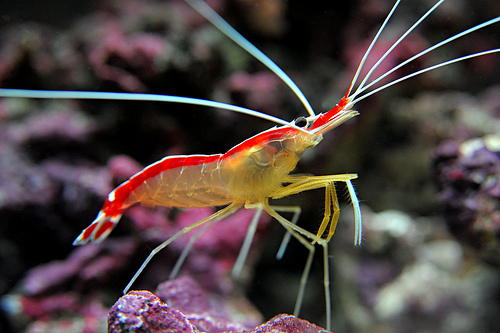What Is a Group of Shrimp Called? Exploring the Fascinating Terminology of Shrimp Collectives
Shrimps, those delightful crustaceans found in oceans and freshwater bodies worldwide, are not only popular in culinary circles but also fascinating from a biological perspective. In this article, we will delve into the intriguing world of shrimp collectives and uncover the answer to the question: What is a group of shrimp called? Through an exploration of shrimp behavior, terminology, and collective dynamics, we aim to provide a comprehensive understanding of how these remarkable creatures come together in their natural habitats.
I. The Social Nature of Shrimps
Shrimps, despite their small size, exhibit surprisingly complex social behaviors. They often form aggregations or groups, which serve various purposes such as protection, reproduction, and foraging.

Shrimps
These social gatherings are influenced by several factors, including species, habitat, and environmental conditions. By examining the social nature of shrimps, we can gain valuable insights into their group dynamics and terminology.
II. Common Terminology for Shrimp Groups
1. Schools vs. Shoals: When discussing groups of shrimp, two commonly used terms are "schools" and "shoals." Although the terms are often used interchangeably, they carry distinct meanings. Schools refer to tightly organized and synchronized groups that move in unison, while shoals are looser associations of individuals that may exhibit more independent behavior.

Shrimp Schools
2. Clusters and Swarms: Another way to describe shrimp groups is by using the terms "clusters" and "swarms." Clusters typically refer to a gathering of shrimps in a relatively confined area, often seeking shelter or protection. Swarms, on the other hand, involve larger numbers of individuals moving together, often during reproductive events or seasonal migrations.
III. Noteworthy Examples of Shrimp Collectives
1. Colonial Shrimp: Some species of shrimp are colonial, meaning they form dense aggregations characterized by intricate burrow ystems. The social structure within these colonies allows for efficient communication and resource sharing.
2. Cleaner Shrimp Stations: Cleaner shrimp, known for their symbiotic cleaning relationships with other marine species, often establish cleaning stations where they congregate and provide their services to other fish. These stations serve as essential hubs for maintaining the health of reef ecosystems.

Cleaner shrimp
3. Migrations and Upwelling Aggregations: Certain shrimp species undertake impressive migratory journeys, traveling long distances in search of suitable breeding grounds. During these migrations, large aggregations of shrimps can be observed, often drawn to areas of upwelling where nutrient-rich waters support abundant food sources.
IV. Implications for Conservation and Research
Understanding the behavior and dynamics of shrimp groups is crucial for effective conservation efforts and further research. By studying the factors that influence group formation and collective behavior, scientists can develop strategies to protect vital habitats, manage fisheries sustainably, and mitigate the impacts of climate change on shrimp populations.
V. Conclusion
In conclusion, a group of shrimp can be referred to by various terms such as schools, shoals, clusters, and swarms, depending on their behavior and context. The social nature of shrimps is a captivating aspect of their biology, highlighting the complexity and adaptability of these remarkable creatures.
By unraveling the terminology and dynamics of shrimp collectives, we gain valuable insights into their social structures and ecological significance. As we continue to explore the world beneath the waves, it is crucial to appreciate and protect the delicate balance of marine ecosystems where shrimp and their fascinating groups thrive.